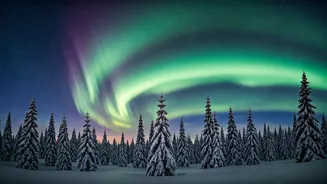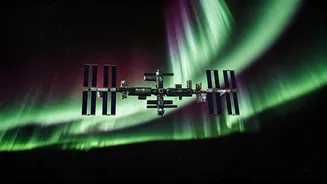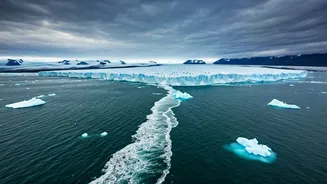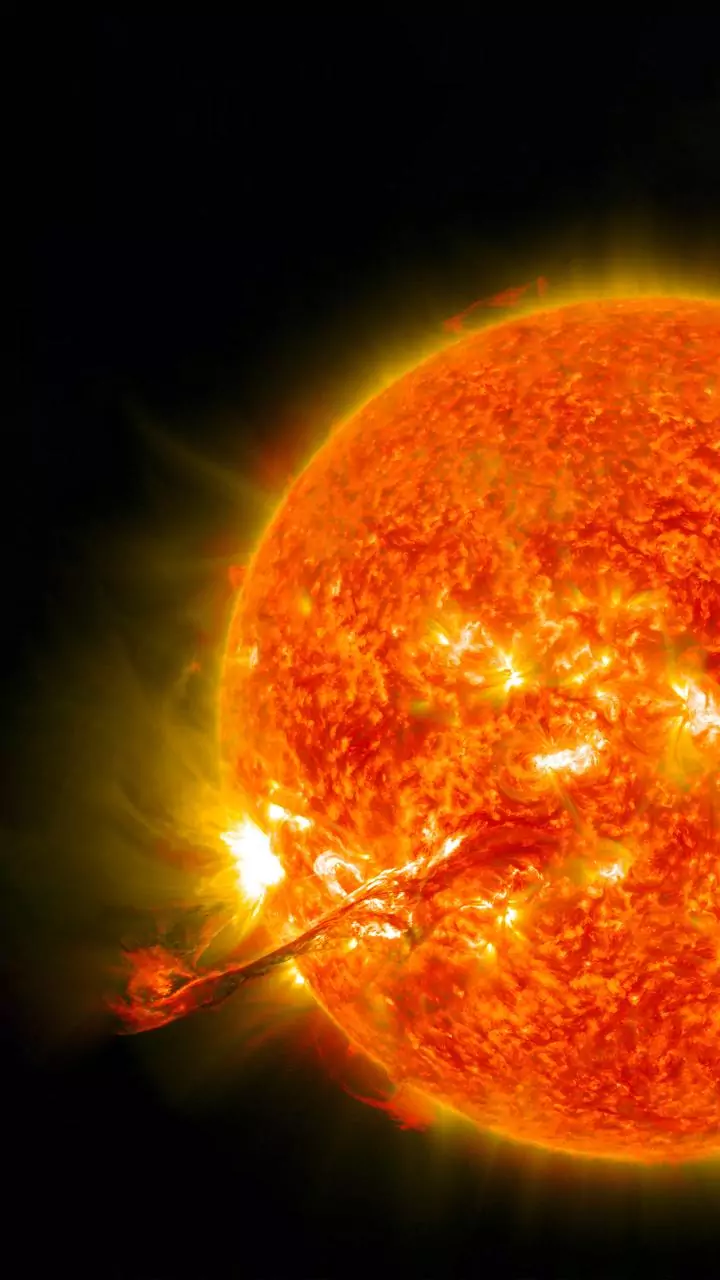What are They?
The Northern Lights, also known as the Aurora Borealis, are nature's light show, seen as shimmering colours dancing across the night sky. But what exactly
causes these beautiful lights? These lights appear when charged particles from the sun, known as solar wind, collide with gases in the Earth's atmosphere. These particles are directed towards the North and South Poles by the Earth's magnetic field. When these particles meet the gases in our atmosphere, such as oxygen and nitrogen, they cause a colourful display. Depending on the type of gas the particles collide with, different colours are created. For example, oxygen glows green or red, while nitrogen often glows blue or purple. The colours, patterns, and movements are constantly changing, making each display unique. This collision creates the aurora, a breathtaking display of light. It's like a cosmic light show, always changing and surprising us.
Where do They Appear?
Generally, the Northern Lights are most visible in the regions close to the North Pole. These areas include countries such as Canada, Alaska (in the United States), Greenland, Iceland, Norway, Sweden, and Finland. Sometimes, under certain circumstances, the lights can even be seen further south than expected. The best locations are usually those with minimal light pollution and clear skies, far away from city lights. Places within the Arctic Circle tend to have the best views due to their proximity to the magnetic North Pole. During the peak of the solar activity, however, the lights might be visible at lower latitudes. It is an amazing experience to witness the Northern Lights dance across the sky. The dance is always fascinating because of the variety of colours and patterns it displays, making it an awe-inspiring experience for anyone who is lucky enough to witness it.
When Can You See Them?
The Northern Lights are most commonly seen during the winter months, specifically from late September to early April. During these months, the nights are long and dark, providing the best opportunities to witness the aurora. However, the exact timing can also be linked to the 11-year solar cycle. During the peak of this cycle, the sun's activity is higher, meaning there are more chances to see the Northern Lights. The best time to watch is usually between 10 pm and 2 am, when the skies are darkest. The aurora is a dynamic phenomenon, with its visibility affected by several factors. Checking the aurora forecasts can also increase your chances of witnessing this breathtaking spectacle. Even though the lights can appear any night of the year, winter offers the most favourable conditions due to the extended hours of darkness and clear skies.
Explaining to Children
When explaining the Northern Lights to a child, use simple language and relatable concepts. You can start by comparing it to a natural light show that the sun puts on, or compare the colours to those of a rainbow. The key is to make it exciting and easy to understand. Tell them that the lights are caused by tiny particles from the sun hitting Earth's atmosphere and making the gases glow. You can explain how these particles travel through space and interact with the air to produce beautiful colours. Use visual aids like pictures, videos, or even drawings to help them understand the concept. A simple way to illustrate this is by comparing it to how a neon sign glows. Encourage questions and let your child explore their curiosity. By making it interactive and fun, you'll make the experience more enjoyable and memorable for both of you. It is a fantastic way to inspire their interest in science and the wonders of the universe.
Making it Exciting
To make learning about the Northern Lights fun, incorporate interactive activities. You could build a model of the Earth and the sun to demonstrate how solar winds cause the aurora. Create a colourful art project using paints or crayons to represent the Northern Lights. Watch videos together and discuss what you see. Use online resources to find information about the aurora and the science behind it. Visit a planetarium or science museum for a more immersive experience. You can also make it a family adventure by planning a trip to see the aurora in person, which will offer your children an unforgettable experience. Making the learning process active will help kids retain information better. Consider creating a scavenger hunt where children locate different colours and shapes of the aurora. Remember to emphasize the wonder of the lights, and to explain how special it is to see a natural phenomenon like this in action. Making the experience fun and memorable enhances a child's love for science.














.webp)
